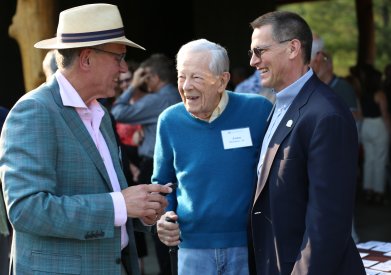Choosing Wisely® – Building Bridges Across Care
October 6, 2015
When the ABIM Foundation launched the Choosing Wisely campaign, we created a set of operating principles for our society partners and gave them guidelines to help them develop their lists. Among these guidelines was a stipulation that recommendations needed to be within the control or purview of that specialty. Each society was asked to take responsibility for waste or overuse in its own domain and, to date, more than 70 societies have created and published over 400 recommendations doing just that.
Over the past three years, our partners have worked diligently to educate their members on these areas of waste through journal articles, education sessions and member communications. We’ve been heartened by the positive response among clinicians in adopting and adapting these recommendations into their practices through a variety of implementation initiatives.
While we were hopeful societies would join us in Choosing Wisely and develop lists of five areas of overuse, we’ve been pleased to see many come back with additional lists of five more, and in at least one case—the American Academy of Family Physicians—a third set of five.
As the library of Choosing Wisely recommendations has grown, the frequency of society list releases has understandably slowed. Yet we are beginning to see the lists and recommendations used in new and innovative ways that I think represent some of the future of the campaign.
The American Academy of Neurology (AAN), in an endeavor to “increase neurologist awareness and inform future efficiency efforts,” recently published an article identifying 74 additional recommendations from across all Choosing Wisely society lists.
AAN identified several areas of overlapping recommendations from societies, as well as gaps in what has been published. AAN found 12 recommendations relevant to neurology that appeared on multiple society lists. These represent areas of consensus across the profession and serve to strengthen the case that they are overused or unnecessary.
Perhaps more important, though, was the identification of gaps in the recommendations. The authors specifically point to neurologic areas that haven’t been covered by the campaign, such as subspecialties of movement disorders or neuromuscular diseases, as opportunities to examine the evidence and determine if new recommendations are needed, either by AAN or others.
I commend AAN for looking at the Choosing Wisely recommendations in their entirety rather than as defined by specialty society and identifying additional areas neurologists should know about. As the authors wrote, “Knowledge of these recommendations is important in delivering efficient neurologic care and should be used to jumpstart patient and physician communication regarding the need for these tests and treatments.”
Choosing Wisely has always been about the conversation between clinicians and patients. I look forward to and encourage additional efforts like the one from AAN to look across the spectrum of all Choosing Wisely recommendations and create new ways of disseminating information to clinicians. By increasing awareness and understanding of what tests and treatments are unnecessary, we’ll help clinicians be better prepared and informed to join their patients in these critical conversations about their care.

Daniel B. Wolfson
EVP and COO, ABIM Foundation


